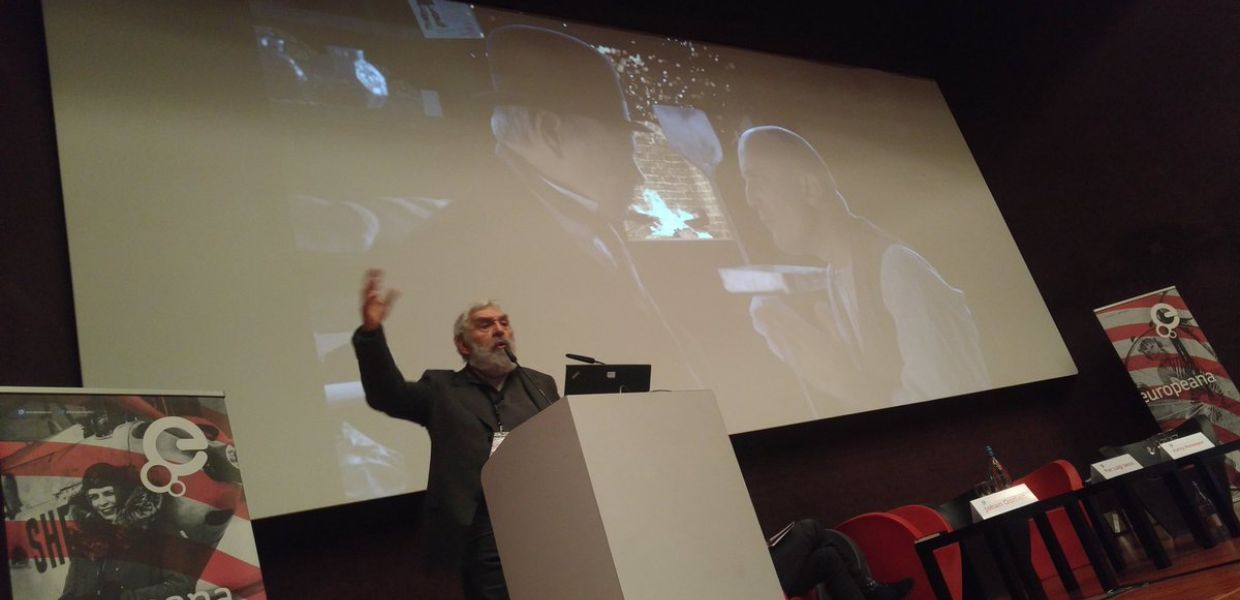Presenting Impact at the Europeana Network Association AGM
The 2017 Europeana Network Association AGM was dedicated to exploring the impact of digital cultural heritage - from a student transcribing the writing of their predecessors, to the museum professional striving to find a digital audience for their beautifully crafted art book. We heard how engaging with the past through digital heritage can improve the lives of dementia sufferers and bring artists, communities and businesses together in public spaces. In this blog we’d like to share everything we saw and heard, and the learning and inspiration we took home with us.

- Title:
- Joe Petrosino Museum pitching during interactive impact assessment session
New perspectives for assessing impact
The day began with a keynote from renowned cultural economist Professor Pier Luigi Sacco, who introduced the Culture 3.0 paradigm. He argues that the blurring of production and consumption - where the consumer now increasingly partakes in production and benefits from doing so - requires a new perspective on the types of values produced, and a refreshed and more strategic approach in the policy areas where cultural spillovers can be found. He discussed several examples, including innovation, sustainability and well-being, traditionally softer’ policy areas, where cultural activity can have a significant macroeconomic impact (for example, after major disease, cultural participation was as important a predictor of psychological well-being as income).
Harry Verwayen, deputy director of Europeana Foundation, followed with a presentation of the research we carried out into the impact of Europeana for GLAMs and individual users. He presented a review of the development and implementation of the Europeana Impact playbook, and the response we’ve received so far (very positive!). Finally, Harry announced our plans for the development of the final parts of the playbook, guiding the user through assessment, narration and evaluation.
Putting theory into practice: an interactive impact assessment session
For many, the highlight of the day was finding out how they can understand the impact of their own projects and those of their peers. To put this in practice, we asked the audience to become part of the ‘impact assessment team’ and to provide live feedback on 10 project pitches specially selected out of the 25 applications we received in response to our call for projects (you can read more about the other potential pitchers).
Each of the successful pitchers had 5 minutes to present the project’s core aims, beneficiaries and outcomes, demonstrating expected impact for stakeholders in areas like health, education, social cohesion, urban planning, the economy, and more. Find out who presented in the following slidedeck and see their full presentations on Slideshare.
The pitches were punctuated by panel sessions featuring Harry, Pier Luigi and members of the impact task force. Questions from the audience were answered during the first panel, ranging from queries as to how to the playbook could help satisfy the impact demands of donors; the relationship between economics and assessing the impact of heritage; involving and monitoring the impact of individual participation; and the role of evidence in policy, practice, and accountability.

audience questions captured via interactive tool Mentimeter during Pier Luigi and Harry’s speeches.
The task force shared their experience of applying impact assessment design to their work. Merete Sanderhoff, of the Statens Museum for Kunst, shared how raising the profile of the impact of SMK Open helps them connect with different stakeholders from funders through to different parts of the organisation. Marco Rendina explained that exploring the impact of Europeana Fashion brought new insights and perspective on how their work delivered value for their stakeholders.
The AGM audience then had the difficult job of selecting a ‘winning’ project via Mentimeter, the interactive tool we used throughout the day. It was a close call, but congratulations to Europeana Transcribathon! Frank Drauschke, who leads the initiative, presented a fantastic case for supporting the wide impact the project can have, including in education, for heritage organisations, for individuals and communities. Europeana Transcribathon will now be supported by Europeana staff to carry out an impact assessment in 2018. We’d like to sincerely thank all of the pitchers who wowed the audience with their passionate pitches and powerful project ideas, and we invite them to stay in touch as they continue their impact journeys.
The playbook has been designed to help capture and narrate this impact, and so we invite you to test it and tell us what you think. There is a lot more to come! Sign up to the LinkedIn group and join our mailing list and stay up to date as we work with Europeana Transcribathon and deliver the next stages of the playbook in 2018.

